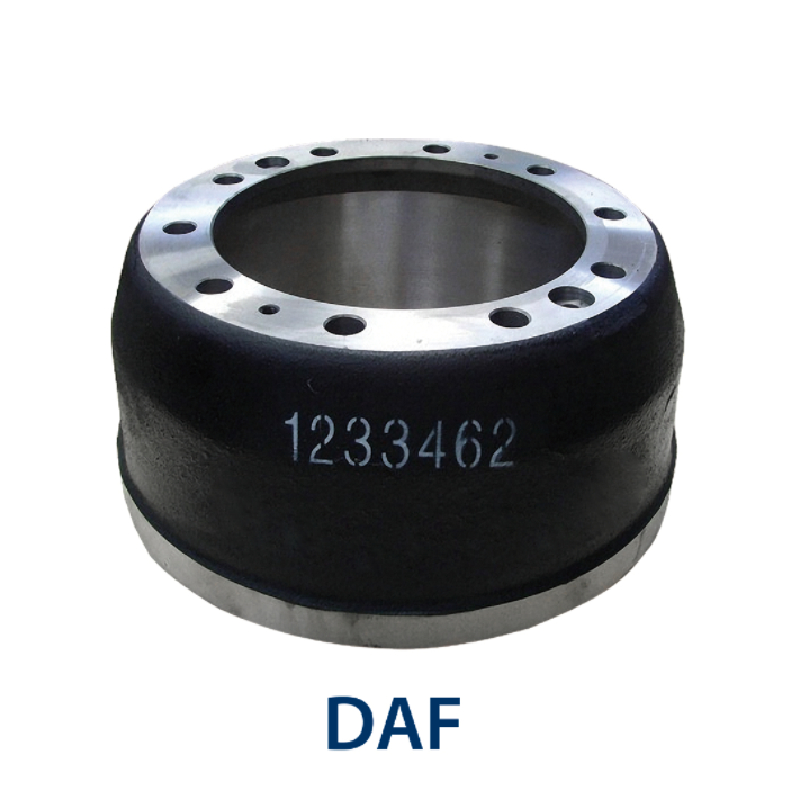Oct . 05, 2024 07:05 Back to list
brake drums vs discs
Brake Drums vs. Discs A Comprehensive Comparison
When it comes to vehicle braking systems, two primary designs dominate the market brake drums and disc brakes. Each system has its own unique advantages and disadvantages, making them suitable for different types of vehicles and driving conditions. Understanding these differences can help car owners, manufacturers, and mechanics choose the best braking solution for their needs.
Brake Drums
Brake drums have been around for a long time and are commonly used in many older vehicles and some modern economical models. The basic design consists of a cylindrical drum that rotates with the wheel. Inside the drum, brake shoes push outward against the inner surface of the drum when the brakes are applied, generating friction that slows the vehicle down.
One of the primary advantages of brake drums is their cost-effectiveness. They are generally cheaper to manufacture and install compared to disc brakes. Additionally, they tend to be more efficient at absorbing heat, which can be beneficial in specific situations where heat buildup is a concern. Brake drums can also provide a smoother feel when slowing down, which is preferable for some drivers.
However, brake drums also come with significant drawbacks. They are more prone to fading under high-stress conditions, such as when driving downhill or during heavy braking. This is because the drum can overheat quickly, leading to decreased braking performance. Maintenance can also be an issue; while drum brakes typically require less frequent adjustments, when they do need service, the process can be more complex and time-consuming compared to disc brakes. Moreover, they may offer a less effective performance in wet conditions, as water can hinder the frictional interaction between the drum and the shoes.
Disc Brakes
brake drums vs discs

In contrast, disc brakes offer a more modern and sophisticated braking technology that has increasingly gained popularity in the last few decades. The design consists of a metal disc (or rotor) attached to the wheel, with brake calipers that house the brake pads. When the brakes are applied, the pads squeeze the rotor, creating friction that slows the vehicle.
One of the significant advantages of disc brakes is their performance under high-stress situations. They dissipate heat more effectively than brake drums, which reduces the risk of brake fade. This makes disc brakes highly efficient for high-performance vehicles and applications that require quick stopping power, such as racing or emergency situations. Additionally, disc brakes perform better in wet weather conditions, as the open design allows water to escape more easily, ensuring consistent performance.
However, the cost associated with disc brakes can be a downside. They are generally more expensive to manufacture and install than brake drums. Furthermore, they may require more frequent maintenance, particularly in vehicles that experience heavy use, as the brake pads can wear out faster due to the high friction involved in their operation.
Conclusion
Ultimately, the choice between brake drums and discs will depend on the specific needs and preferences of the driver, as well as the type of vehicle. For budget-conscious consumers or those driving older vehicles, brake drums may still be a viable option. On the other hand, for performance-oriented drivers or those in need of reliable stopping power in various conditions, disc brakes are typically the better choice.
It's also worth considering that many modern vehicles use a combination of both systems, with disc brakes on the front wheels and drum brakes in the rear. This hybrid approach aims to balance cost, performance, and reliability, ensuring that drivers can enjoy the best of both worlds.
In summary, whether you opt for brake drums or disc brakes, understanding the pros and cons of each system can empower you to make informed decisions about your vehicle's braking performance and maintenance. Always consult with a professional mechanic to evaluate your specific needs and ensure the safest driving experience.
-
HINO Industrial Efficiency-Jiangsu Hino Industrial|Productivity Optimization&Cost Reduction
NewsJul.12,2025
-
HINO-¡Ң���ຽ��е��������˾|Advanced Industrial Solutions&Energy Efficiency
NewsJul.12,2025
-
Premium Brake Drum Iveco – Durable Drum Brake Drum & Brake Shoe Solutions
NewsJul.08,2025
-
High-Performance Brake Drum Liza for Enhanced Safety Reliable Drum Brake Drum & Brake Shoe Solutions
NewsJul.08,2025
-
High-Quality Brake Drum MAZ – Durable Drum Brake Drum & Brake Drum and Brake Shoe for Optimal Performance
NewsJul.07,2025
-
High-Quality Brake Drum Kamaz for Reliable Performance Durable Drum Brake Drum & Brake Shoes
NewsJul.07,2025
